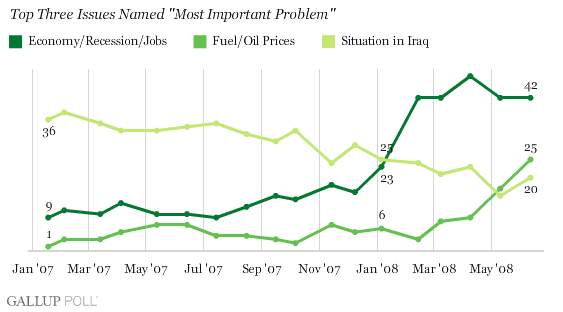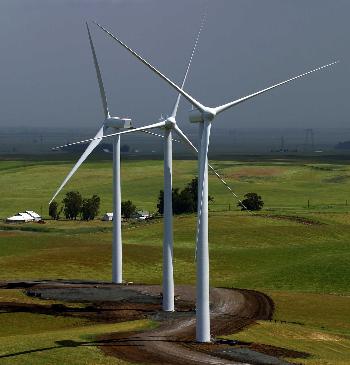 By Helen Aki and Jesse Jenkins, cross-posted from the Breakthrough Blog
By Helen Aki and Jesse Jenkins, cross-posted from the Breakthrough Blog
Just as the time becomes ripe for a major push towards clean, cheap sources of electricity, the Bureau of Land Management threw a two-year stumbling block in the path of solar power development last Friday. As solar power ramps up--the Bureau has received 130 proposals solar plants since 2005--the Bureau decided to put a hold on further development, claiming that that an exhaustive environmental impact report must be completed before solar plants can be installed on federally owned lands. Meanwhile, the push continues for oil drilling in protected offshore areas and the Alaskan National Wildlife Refuge (an endeavor that really merits an environmental impact assessment!).
Using environmental justifications to suppress the growth of new, clean, American energy sources doesn't fly with environmentalists (who must feel like their political tool (the EIS) has been perversely co-opted by the "dark side"). But the Mojave ground squirrel aside (a species allegedly threatened by the solar development), it strikes me that anything that actively blocks much needed new clean, renewable energy is not only perverse or ironic, but actually dangerous.
Timed as it is to coincide with the expiration of critical renewable energy incentives, this new road block is bad news for the solar industry-- and actively blocking the advancement of new sources of clean, American energy is bad news for the economy as a whole. Now more than ever, as the price of oil continues to rise, buoying inflation and economic insecurity along with it, the transition to new clean sources of American energy is critical to secure continued economic prosperity.
As the New York Times reports:
"It doesn't make any sense," said Holly Gordon, vice president for legislative and regulatory affairs for Ausra, a solar thermal energy company in Palo Alto, Calif. "The Bureau of Land Management land has some of the best solar resources in the world. This could completely stunt the growth of the industry." (emph. added)
Even if the moratorium on solar plants in public lands does not entirely smother the solar industry--after all, privately owned lands are still fair game--it is symbolic of a structural failure to fully acknowledge and understand the problems we face, or embrace progressive and effective policies to solve them.
The price of gas has exceeded $4 a gallon in most of the country (it was well over $4.50 in northern California this weekend), the economy is in a downturn, and Americans are crying out for new energy solutions. Cheap, abundant supplies of oil may have powered the United States of the past, but our continued reliance on this depleting and increasingly expensive fossil fuel is now imperiling our economy and our way of life. The obvious answer - to everyone but the federal government apparently - is to tap our vast reserves of abundant renewable energy and develop the new clean, cheap American energy sources that will power the 21st Century.
Instead, all we hear from our Bush Administration throws up roadblocks to the clean energy sources at our fingertips and calls to Drill! Drill! Drill! for more oil (i.e. more of the same). Meanwhile critical renewable energy incentives gasp their final, rattling breath in Congress.
Why? Though the answer may lie with oil interests, there is a deeper trend. In his most recent New York Times op-ed, Thomas Friedman laments the current state of the union and insists that we need to rebuild a dysfunctional nation. He writes that, "It's the state of America now that is the most gripping source of anxiety for Americans," adding that "our political system seems incapable of producing long-range answers to big problems or big opportunities" -- a myopia which is only too evident in a policy such as the BLM's, and in the absurd energy solutions proposed by the current administration.
Friedman goes on to say:
"I continue to be appalled at the gap between what is clearly going to be the next great global industry -- renewable energy and clean power -- and the inability of Congress and the administration to put in place the bold policies we need to ensure that America leads that industry."
We are living in a dangerous time, a time of energy crisis. Out of this danger comes opportunity, and a choice between futures.
We can choose to continue towards a future of oil dependency that spells disaster for both our economy and our climate, putting up impediments to essential new American energy industries and providing "life support" in the form of continued subsidies to the mature ones in decline. Or we can choose to recharge America with the power sources of a truly novel era, letting go of that which is no longer politically or economically strategic and cultivating that which will lead us into an age of clean energy and prosperity.
It seems that, so far, we have only chosen the former. Which future do you choose?
Image source: NY Times
Read more!





 By Alisha Fowler and Jesse Jenkins.
By Alisha Fowler and Jesse Jenkins. 



 Cross-posted from
Cross-posted from 









